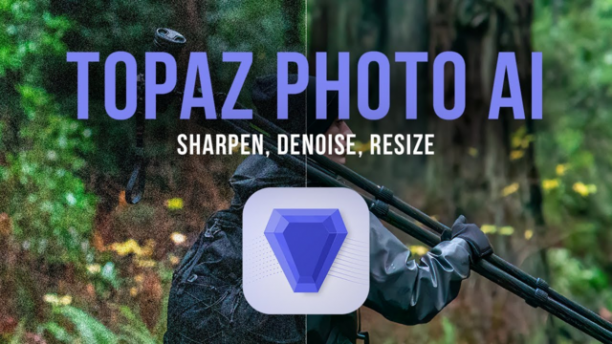Most Commented
Master Giac Certified Incident Handler (Gcih) Essentials




Description material

Master Giac Certified Incident Handler (Gcih) Essentials
Published 10/2024
MP4 | Video: h264, 1920x1080 | Audio: AAC, 44.1 KHz
Language: English | Size: 1.96 GB | Duration: 2h 39m
From Incident to Resolution: Comprehensive Training for GCIH Certification, Incident Management Mastery. | Unofficial |
What you'll learn
Understanding the roles, responsibilities, and skills essential to incident handlers.
Mastering the six core phases—Preparation, Identification, Containment, Eradication, Recovery, and Lessons Learned.
Learning how to structure an effective IRT and implement incident response policies and procedures.
Gaining proficiency in recognizing different types of security incidents, Indicators of Compromise (IoCs), & classifying & prioritizing incidents.
Exploring both short-term and long-term containment strategies, data preservation methods, and malware removal approaches.
Developing strategies for system restoration, post-incident monitoring, and enhancing security measures after incidents.
Learning to document incidents effectively, create detailed post-incident reports, and conduct lessons-learned reviews to improve future responses.
and much more
Requirements
Willingness or Interest to learn about GIAC Certified Incident Handler (GCIH) and Certification Preparation.
Description
IMPORTANT before enrolling:This course is not intended to replace studying any official vendor material for certification exams, is not endorsed by the certification vendor, and you will not be getting the official certification study material or a voucher as a part of this course.This course, Mastering Incident Handling and Response: A Comprehensive Guide to GIAC GCIH Certification, offers a deep dive into the essential skills and knowledge required to become an effective incident handler and to achieve GIAC Certified Incident Handler (GCIH) certification. Designed for IT professionals, cybersecurity specialists, and those looking to enhance their incident response capabilities, the course covers all aspects of incident handling, from the initial phases of preparation through the final stage of post-incident reviews.GIAC Certified Incident Handler (GCIH) certification validates an individual's skills in identifying, responding to, and mitigating security incidents effectively. Those who hold the GCIH credential have proven expertise in managing cybersecurity threats, handling incidents, and deploying defensive strategies to protect organizational assets.Starting with a foundational overview of GCIH certification and the critical role of an incident handler, students gain insight into the responsibilities, skills, and competencies needed to identify and manage security incidents effectively. The course then explores each phase of the incident response process, including preparation, identification, containment, eradication, recovery, and lessons learned. Each phase is addressed in detail to provide a thorough understanding of both the theoretical and practical aspects of incident handling.Preparation is emphasized as a core part of an effective incident response strategy, guiding students through the essentials of building an Incident Response Team (IRT), establishing policies, and identifying necessary tools and resources. In the identification phase, students learn how to recognize security incidents, utilize Indicators of Compromise (IoCs), classify incidents, and document identification efforts accurately.During the containment phase, strategies for immediate and sustained containment are explored, highlighting short-term and long-term approaches and data preservation considerations for forensic analysis. Following containment, the eradication phase focuses on eliminating root causes of incidents, including malware removal, vulnerability patching, and verification processes to ensure thorough eradication.The recovery phase covers strategies for system restoration, validation, and post-incident monitoring, ensuring systems are back to full operation while monitoring for potential lingering threats. Finally, the course closes with a focus on the lessons learned, where students learn to create post-incident reports, conduct review meetings, and update policies to strengthen security postures and improve future incident responses.The GCIH certification focuses on equipping candidates with knowledge of common attack techniques, detection methods, incident response phases, and strategies to defend against and respond to various cyber threats. Key areas covered include understanding and recognizing indicators of compromise (IoCs), performing forensic analysis, conducting containment and eradication procedures, and applying relevant tools and technologies in incident handling.GCIH is widely recognized in the industry and valued by employers who need skilled incident handlers capable of responding promptly and effectively to mitigate the impact of security incidents. It's particularly beneficial for roles like incident responders, security analysts, forensic analysts, and other IT security professionals who are responsible for managing and addressing security breaches and ensuring organizational cybersecurity.This course equips students with a robust understanding of the incident handling process and prepares them for the GCIH certification, enhancing their capacity to handle and resolve cybersecurity incidents effectively.Thank you
Overview
Section 1: Introduction to GIAC and Incident Handling
Lecture 1 Introduction to GCIH Certification
Lecture 2 The Role of an Incident Handler
Lecture 3 Introduction to Incident Response Phases
Lecture 4 Key Terminologies in Incident Response
Section 2: Preparation Phase
Lecture 5 Preparation Overview
Lecture 6 Building an Incident Response Team (IRT)
Lecture 7 Incident Response Policies and Procedures
Lecture 8 Tools and Resources for Incident Response
Section 3: Identification Phase
Lecture 9 Identifying Security Incidents
Lecture 10 Indicators of Compromise (IoCs)
Lecture 11 Incident Classification and Prioritization
Lecture 12 Documentation During Identification
Section 4: Containment Phase
Lecture 13 Containment Overview
Lecture 14 Short-term Containment
Lecture 15 Long-term Containment
Lecture 16 Data Preservation and Forensic Readiness
Section 5: Eradication Phase
Lecture 17 Eradication Overview
Lecture 18 Malware Removal Strategies
Lecture 19 Patch Management and Vulnerability Removal
Lecture 20 Verification of Eradication
Section 6: Recovery Phase
Lecture 21 Recovery Overview
Lecture 22 System Restoration and Validation
Lecture 23 Monitoring Post-Incident
Lecture 24 Strengthening Security Post-Incident
Section 7: Lessons Learned
Lecture 25 Creating Post-Incident Reports
Lecture 26 Conducting Post-Incident Reviews
Lecture 27 Updating Policies and Procedures
Cybersecurity Professionals: Individuals in cybersecurity roles who want to strengthen their incident handling and response skills, including those already familiar with basic security concepts.,Incident Responders and Security Analysts: Professionals responsible for monitoring and responding to security incidents who want a deeper understanding of incident response phases and defensive strategies.,IT and Network Security Specialists: IT professionals seeking to expand their knowledge of incident handling processes, build response capabilities, and manage security events effectively.,Forensic Analysts and Threat Hunters: Analysts interested in forensic readiness, threat identification, and leveraging indicators of compromise to contain and mitigate security breaches.,Aspirants of GIAC GCIH Certification: Individuals preparing for the GCIH certification exam who need a structured, comprehensive course covering the knowledge and skills required to succeed.,This course is ideal for anyone looking to enhance their cybersecurity incident response expertise, contribute to organizational security, and confidently handle complex security incidents.

Fikper
https://fikper.com/HEYlB7m17B/Master.GIAC.Certified.Incident.Handler.GCIH.Essentials.part1.rar.html
https://fikper.com/B0JKVkiGe3/Master.GIAC.Certified.Incident.Handler.GCIH.Essentials.part2.rar.html
FileAxa
https://fileaxa.com/3yjt53smh1a6/Master.GIAC.Certified.Incident.Handler.GCIH.Essentials.part1.rar
https://fileaxa.com/xou6ttffm2ob/Master.GIAC.Certified.Incident.Handler.GCIH.Essentials.part2.rar
RapidGator
https://rapidgator.net/file/0a0cf0d878a1f97e72cbe4cc2b6658b4/Master.GIAC.Certified.Incident.Handler.GCIH.Essentials.part1.rar
https://rapidgator.net/file/65c61f4753d47077d16e02d4b563578f/Master.GIAC.Certified.Incident.Handler.GCIH.Essentials.part2.rar
FileStore
TurboBit
https://turbobit.net/8ta5l936jz40/Master.GIAC.Certified.Incident.Handler.GCIH.Essentials.part1.rar.html
https://turbobit.net/jsebh89q5uk4/Master.GIAC.Certified.Incident.Handler.GCIH.Essentials.part2.rar.html
Join to our telegram Group
Information
Users of Guests are not allowed to comment this publication.
Users of Guests are not allowed to comment this publication.
Choose Site Language
Recommended news
Commented



![eM Client Pro 9.2.1735 Multilingual [Updated]](https://pikky.net/medium/wXgc.png)






![Movavi Video Editor 24.0.2.0 Multilingual [ Updated]](https://pikky.net/medium/qhrc.png)

